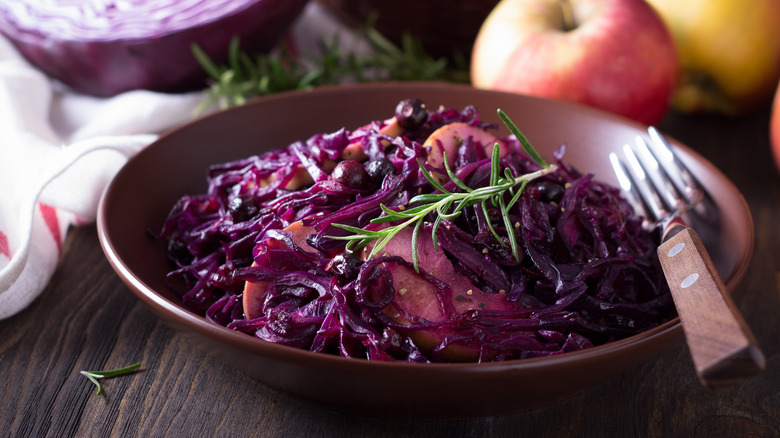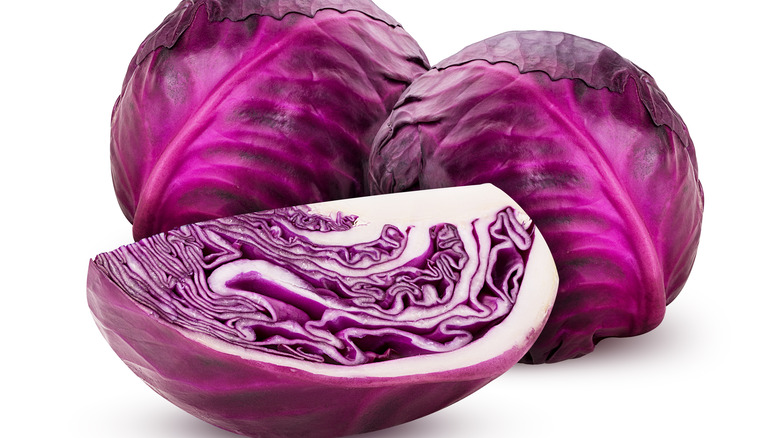The Scientific Reason Your Braised Red Cabbage Turns Blue
It's hard to think of a vegetable more emblematic of fall than cabbage. Although this hearty crucifer is available year-round, according to Popsugar, its seasonal peak is in the colder months, when we tend to enjoy it in warm, comforting soups, stews, and braises. Other tasty cooked cabbage dishes we love include homemade cabbage au gratin, which combines the leafy veggie with herbs and plenty of cheese, and corned beef and cabbage, an Irish classic commonly served on St. Patrick's Day.
Cabbage comes in a wider range of varieties than you might be aware of, spanning from frilly-leafed Napa cabbage to lacy, tender Savoy cabbage (via Michelin). But if you're no cabbage aficionado, you probably tend to choose it by color: either green or red, depending on the recipe you're making. Red cabbage is a delicious and healthy option — it actually contains 10 times the vitamins, flavonoids, and antioxidants compared to green varieties, according to Eat the 80. That's all well and good, but cooked red cabbage also has a habit of turning an unappetizing shade of blue when cooked. What gives?
Red cabbage's natural pigments are super sensitive
Perhaps you've never stopped to think about what gives fruits and vegetables their stunning range of colors. What really creates yellow lemons, orange carrots, and dark red cherries? The answer is their natural pigments, which boast technical names like flavonoids, carotenoids, and anthocyanins, according to Athens-Clarke County. In addition to being pretty, these compounds can confer an impressive range of health benefits, from fighting cancer to boosting eye health.
WebMD explains that purple and "blue" foods such as blueberries, grapes, and red cabbage get their particular hues from pigments called anthocyanins, which are thought to help lower blood pressure and prevent the onset of diabetes. These pigments are also the reason why red cabbage turns a strange shade of blue when it's cooked: Extraordinarily sensitive to acidity, anthocyanins will turn blue when their environment goes a little alkaline; say, when tap water is added to a cooked dish (via Cook's Illustrated).
Red cabbage that's gone blue isn't any less delicious or nutritious, but it might not look as appetizing on the plate. Not to worry: This natural phenomenon has an easy fix, and that's adding acid in the form of wine, vinegar, or lemon juice, which will restore the cabbage to its rosy color. So the next time you're braising this tasty crucifer, don't forget to reach for your bottle of vino or a nearby lemon.

